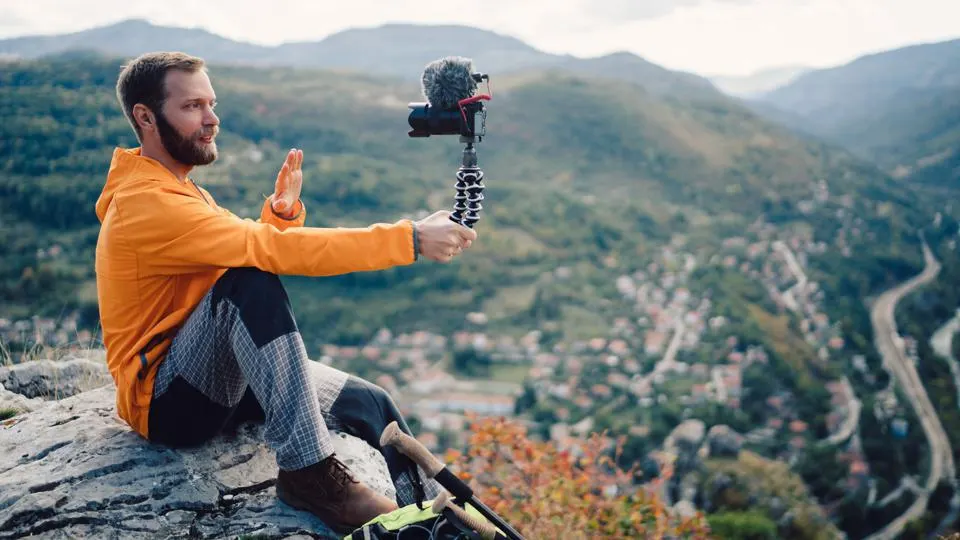Inquire
how to start a travel blog

Travel blogs
Before planning a trip, we tend to do a lot of research on both Google and social media. Therefore, the demand for reading other people's travel reviews is high. If you’re a globetrotter and a freelancer, consider this type of outlet. You can start with an insider’s guide on places to explore near you, offering reasons to visit your very own hometown, region or country.
We recommend honing in on a travel niche, whether it’s a type of hotel (luxury hotels, hostels, etc.), a kind of trip (backpacking, camping, etc.) or a geographical area. For instance, the blogger behind Tales Of Israel shares inspiring guides focusing only on the Holy Land. This makes her an expert and a trustworthy source to readers.
Dave Grohl said, "No one is you, and that is your power." It’s true that almost all corners of the world have been written about, but they have not been written about by you. People will experience your destinations through your eyes. Help them get to know you and the reasons you like traveling with an intriguing About Me page.
On top of the recognition, some successful bloggers get free hotel stays or even sponsored travel experiences and can also generate income through ads on their site.
Topics you can write about:
-
Destination recommendations
-
Activity itineraries
-
Local guides on hotels and restaurants

-
Choose a Blogging Platform: Select a user-friendly and customizable platform to host your blog. Popular options include WordPress, Blogger, and Squarespace.
-
Define Your Travel Niche: Determine the focus of your travel blog. Are you going to cover budget travel, luxury travel, solo adventures, family vacations, or specific destinations? Define your niche to attract a targeted audience.
-
Select a Catchy Blog Name: Choose a name that reflects the essence of your travel blog and is easy for readers to remember. Avoid complex or hard-to-spell names.
-
Create a Compelling About Page: Introduce yourself and your passion for travel on your About page. Share your travel experiences, photography, and what readers can expect from your blog.
-
Design and Layout: Opt for a clean and visually appealing blog design that showcases your travel photos and content effectively. Ensure your blog is mobile-friendly as many readers browse on their smartphones.
-
Share Your Travel Stories: Write engaging and descriptive travel stories that transport readers to the places you've visited. Include personal anecdotes, cultural experiences, and memorable moments.
-
Photography and Visuals: High-quality visuals are essential for a travel blog. Share stunning photos of your travel destinations to capture readers' attention.
-
Travel Tips and Guides: Offer practical travel tips, itineraries, and destination guides for your readers. Share insights on things to do, places to eat, and hidden gems.
-
Engage with Your Readers: Encourage reader interaction by responding to comments and questions. Build a community around your blog through social media and newsletters.
-
Travel Safety and Planning: Provide tips on travel safety, packing essentials, and how to plan a trip effectively.
-
Budgeting and Money-saving Tips: Share strategies for traveling on a budget, finding travel deals, and maximizing your travel funds.
-
Cultural Etiquette: Educate readers about the importance of cultural sensitivity and respecting local customs while traveling.
-
Collaborate with Other Travel Bloggers: Partner with other travel bloggers or influencers for guest posts or collaborations to expand your reach.
-
Document Different Travel Styles: Cover a range of travel styles, from adventure travel and backpacking to luxury getaways and eco-tourism.
-
Travel Challenges and Inspirational Stories: Share personal challenges you've faced while traveling and inspiring stories of overcoming obstacles on the road.
-
Sustainable Travel: Discuss eco-friendly and responsible travel practices to promote sustainable tourism.
-
Seasonal and Event-based Content: Tailor your content to holidays, seasonal travel, and popular events happening around the world.
-
Travel Gear and Product Reviews: Offer reviews of travel gear, gadgets, and equipment that can enhance the travel experience
-
conclusion:Starting a travel blog requires dedication and consistency. Be patient, as it may take time to grow your audience. With passion and perseverance, your travel blog can become a valuable resource for fellow travelers and an enjoyable outlet for your love of exploration

- Managerial Effectiveness!
- Future and Predictions
- Motivatinal / Inspiring
- Other
- Entrepreneurship
- Mentoring & Guidance
- Marketing
- Networking
- HR & Recruiting
- Literature
- Shopping
- Career Management & Advancement


 SkillClick
SkillClick